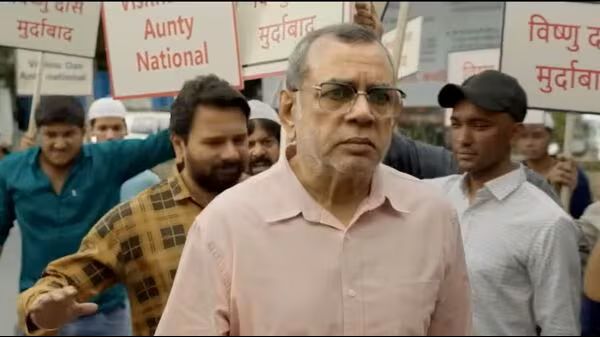Paresh Rawal’s upcoming film The Taj Story has stirred controversy for questioning the Taj Mahal’s history. Following the Hera Pheri 3 buzz, the film’s poster and trailer received mixed reactions. Despite criticism for its claims, the movie continues to attract attention ahead of its much-anticipated release.
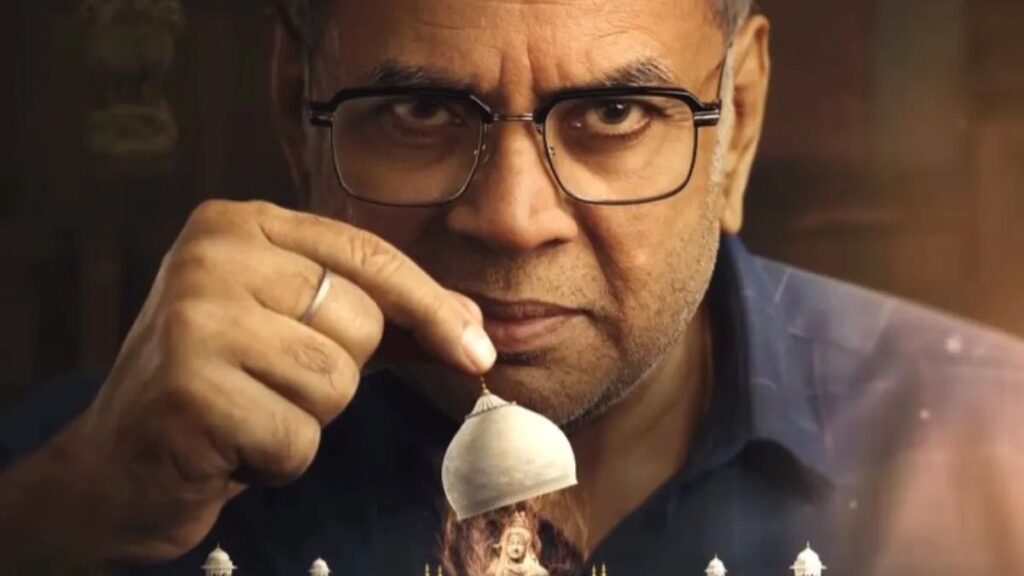
Paresh Rawal’s upcoming film The Taj Story Watch Trailer
The Taj Story trailer
The trailer of The Taj Story has left audiences divided, mainly due to its bold dialogues and provocative claims. Paresh Rawal’s character, Vishnu Das, makes headlines with lines like, “DNA test karwalo (Get a DNA test done)!” and “The Taj is not a symbol of love but of atrocity and genocide.” The film also stirs curiosity by questioning the mystery surrounding the 22 locked rooms of the Taj Mahal, adding fuel to an already heated debate.
Netizens react to The Taj Story trailer
Following the trailer’s release, social media was flooded with mixed reactions from viewers. One user commented, “Indian cinema has truly lost its essence.” Another mocked the film, calling it “a product of WhatsApp university.” Some expressed disappointment, saying, “Babu bhaiya, what have you gotten into?” Yet, a few defended the film, claiming it sheds light on overlooked historical truths. Another viewer praised it simply, saying, “What a powerful trailer!”
The Taj Story controversy: Beginning
The controversy surrounding The Taj Story ignited soon after its motion poster dropped. The poster showed Paresh Rawal lifting the dome of the Taj Mahal to reveal a statue of Lord Shiva inside, sparking instant debate. Its caption read, “What if everything you know is a lie? The truth isn’t buried — it’s being questioned.”
Makers react to claims
As the motion poster and trailer triggered widespread criticism online, the makers of The Taj Story stepped in to clarify their intentions. Social media had been abuzz with claims that the film distorted facts and fueled religious sentiments, prompting the team to issue a formal statement to calm the growing outrage.
In their statement, the filmmakers asserted that The Taj Story “does not deal with any religious matters” and “does not claim that a Shiva temple exists inside the Taj Mahal.” They further added that the movie is rooted in historical interpretation rather than ideology, urging audiences to watch it with an open mind and form their own opinions.
When will The Taj Story release
The Taj Story will release on Friday, October 31, on Sardar Vallabhbhai Patel’s birth anniversary.
It is backed by CA Suresh Jha under the banner of Swarnim Global Services Pvt Ltd.
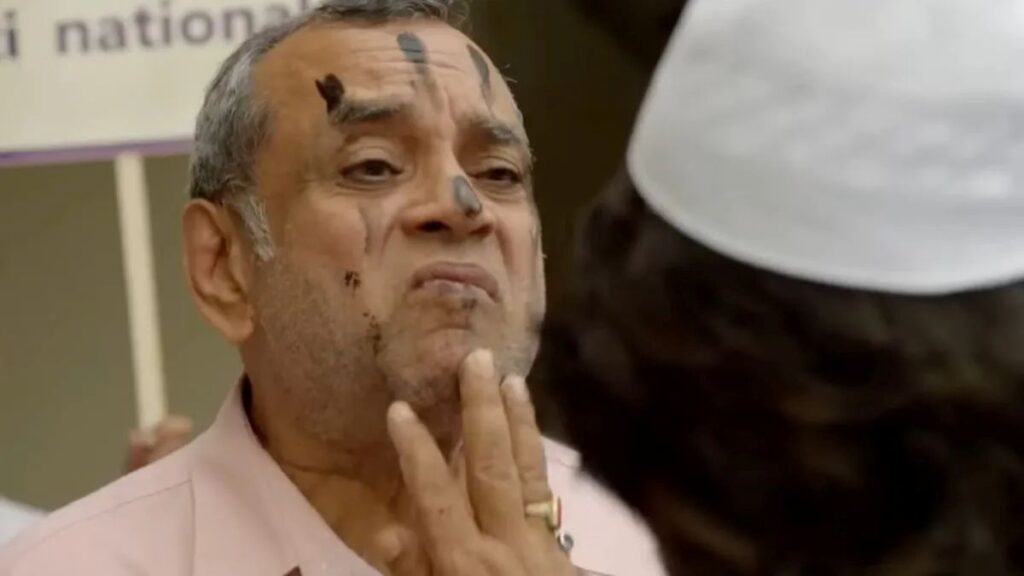
Bollywood veteran Paresh Rawal has been making headlines frequently in recent months. Initially, it was his unexpected departure from Hera Pheri 3 and the reported fallout with co-star Akshay Kumar that grabbed attention. Though the two seemed to have resolved their differences, just when fans thought peace had returned, Rawal found himself in the middle of another storm.
This time, the spotlight is on his upcoming film The Taj Story, whose motion poster has ignited widespread discussion and controversy both online and offline, leaving audiences curious about what the film truly aims to reveal.
Social media uproar
The motion poster of The Taj Story didn’t sit well with many viewers, who flooded the comments section with strong reactions. One disappointed user wrote, “Didn’t expect this from Paresh Rawal, OMG!” while another slammed it as “utter nonsense.” Some accused the makers of “trying to create unrest in the country,” and a few even expressed dismay at the actor, saying, “You were once so respected, sir — why do all this just for money?”
The Taj Story Controversy: Paresh Rawal’s ‘DNA Test’ Dialogue, 22 Locked Rooms of Taj Mahal and Poster Spark Debate — Explained
Built between 1632 and 1648 by Mughal emperor Shah Jahan in memory of his wife Mumtaz Mahal, the Taj Mahal stands as an iconic symbol of India. UNESCO calls it “the jewel of Muslim art in India” and “one of the universally admired masterpieces of the world’s heritage.” It houses the tombs of both Shah Jahan and Mumtaz Mahal.
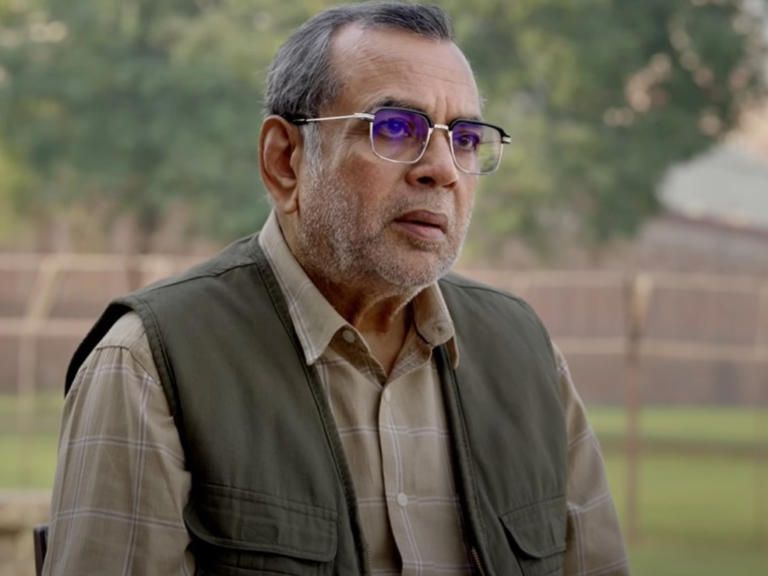
The monument’s design features a perfectly balanced layout, with an octagonal tomb chamber at the center, surrounded by portal halls and four corner rooms. The structure is repeated on the upper floor. The exterior is square with chamfered corners, and the large double-storied domed chamber contains the cenotaphs of the royal couple, exemplifying Mughal architectural brilliance.
The so-called “22 rooms” in the basement are actually a long arched corridor with doors for better space utilization, according to the Archaeological Survey of India (ASI). ASI staff clean this area weekly or fortnightly, and there is nothing on the walls. It remains locked mainly for security and preservation purposes.
A retired ASI official noted that the basement is not a tourist attraction, and access is restricted to prevent unnecessary movement in the protected UNESCO World Heritage Site. Despite rumors, there is no secret history hidden in the basement; it is purely a measure to safeguard the monument, which attracts up to one lakh visitors daily.
Architectural features of the Taj
Renowned archaeologist K K Muhammed, who retired in 2012 as ASI’s Regional Director (North), told The Indian Express that he found no religious motifs inside the basement rooms of the Taj Mahal.
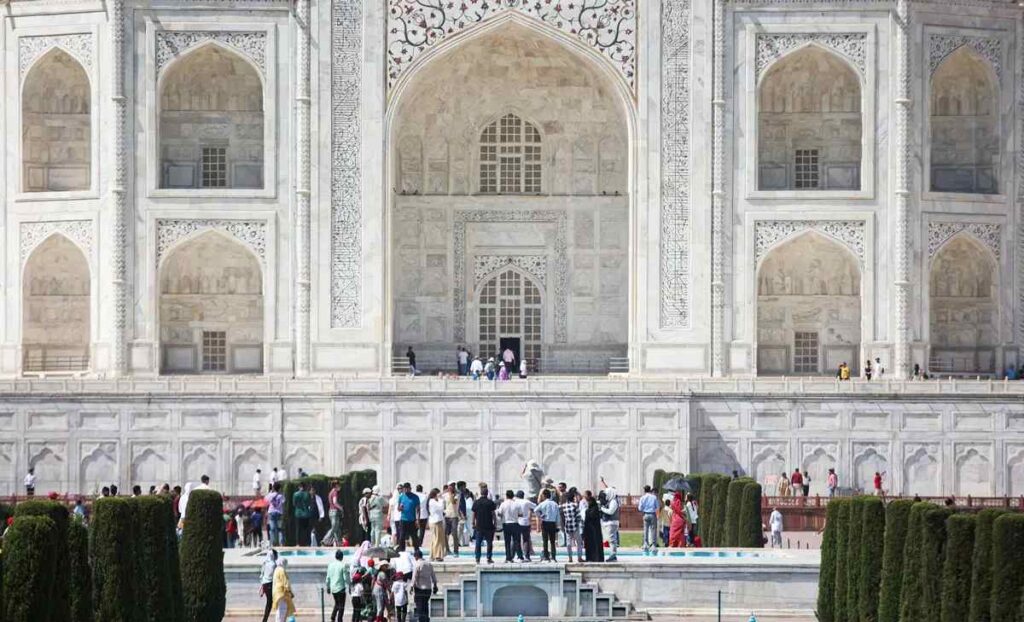
He added that such rooms are common in other Mughal-era structures in Agra and New Delhi, including Humayun’s Tomb and Safdarjung’s Tomb.
“The ASI maintains all these basement areas. The walls are bare, with no motifs; they are purely structural elements to raise the plinth supporting the main mausoleum and minarets,” Muhammed explained.
An official from ASI’s Agra Circle said, “For a structure this size, arches are built after laying the foundation to lift the platform and distribute the load evenly. Periodic surveys of the basement are conducted to test the Taj Mahal’s structural strength.”
Claims of a ‘temple’ at Taj
Over the years, claims have surfaced repeatedly — and have been rejected by historians, ASI officials, and courts, including the Supreme Court — suggesting that the Taj Mahal is actually a Hindu temple and that idols may be hidden in its basement.
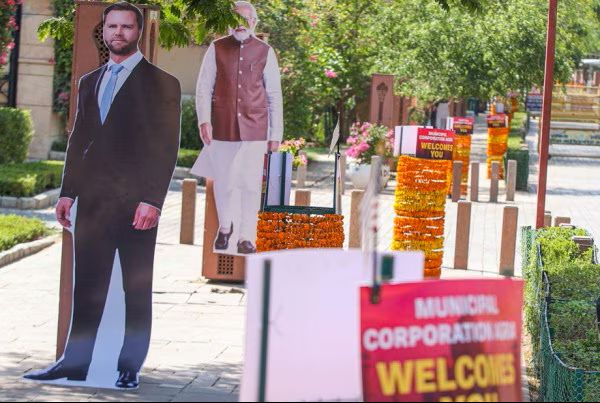
These assertions were also hinted at in The Taj Story trailer. We previously explained the history and debunked these claims in detail in an earlier article.
Muhammed noted that the Taj Mahal is first mentioned in the Badshahnama, the official chronicle of Shah Jahan’s reign. Its architectural style confirms it could not have been built even 50 years earlier than the historically assigned period.
“The Taj incorporates double domes, inlays, and jaalis from contemporary Mughal structures existing at the time it was commissioned,” Muhammed explained, highlighting that its design firmly aligns with Mughal architectural evolution.
